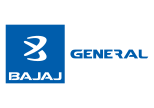How to Speed Up Health Insurance Claim Settlement Process?
Sedentary lifestyle, pollution, and lack of nutritious diet have led to making the urban population vulnerable to diseases. From going to a physician for a routine checkup or visiting a doctor to undergo surgery, treatment costs have increased unexpectedly. In such a case, even imaging to spend a week in a hospital is enough to send shivers down the spine of a common person like me and you.
However, the scenario will be different if you have already invested in an adequate health cover. As a policyholder, you can go for cashless treatment in a network hospital or pay the hospital bill from your own pocket in case of a non-network hospital and claim for the reimbursement.
Needless to say, even after getting a good health plan, many of you still have a doubt about the claim approval. One or more hassles at the time of claim settlement may always keep you in doubts whether or not you would get the claim against the medical expenses. And become doubtful is reasonably justified. Health insurance claims settlement process is always a cause of concern.
Thus, the matter does not finish after availing an adequate cover. You need to know the claim settlement process of your policy in order to sideline any hassles.
Let’s unveil through this article every important point about health insurance claim settlements to speed up the process.
Types of Claim Settlements:
Every health insurance company provides two ways to file claims:
- Cashless claim settlement
- Reimbursement claim settlement
Cashless claim settlement: This is the simplest and most convenient way of settling a claim. For this type of settlement, the policyholder needs to get admitted to a network hospital anywhere in the country or another country (if the policy covers International expenses). The insurance company directly settles the claim through Third-Party Administrators (TPA). TPA works as an intermediary between the hospital and the insurer.
Reimbursement claim settlement: Under the reimbursement claim settlement process, the insured person needs to pay he hospital bills and then claim at the insurance company for the reimbursement of the amount by providing all the required documents and fulfilling other requirements.
In Case of a Cashless Claim
Insurance providers have tie-ups with many hospitals across the country to manage claims. Collectively, these hospitals are known as network hospitals. When getting admitted, find the nearest network hospital in your city. The list of network hospitals is available at the official website of the insurance company. The hospital and your insurer settle hospital bills. Comparatively, this is quicker and convenient than reimbursement claims.
Following are tips for the cashless claim settlement process:
Find a network hospital: First of all, you need to find a network hospital in your vicinity.
Intimate the insurer: Intimate your insurance company before getting admission in case of planned treatment and after admission in case of an emergency.
Carry your health card: While visiting the hospital, carry your health card (or just the policy number as some company doesn’t provide card) and one photo ID proof.
Get the pre-authorisation request form: Get from the hospital desk, the pre-authorisation request form. Fill it and submit to the hospital.
Let the identity get checked: The hospital authority will check your identity and send the pre-authorisation request to the insurer.
Receiving approval letter: The insurance company or the TPA service provider will approve the claim and send an approval letter to the hospital.
After receiving the approval letter, the hospital discharges the insured patient without asking for paying the hospital bill. And in case the cashless claim is denied, the policyholder can file a reimbursement claim after discharge.
In Case of the Reimbursement Claim Settlement
If the hospital where you have got the treatment is not a part of the cashless hospital network of your insurance company, then you will need to clear all the hospital bills on your own and go for the reimbursement claim option. After paying the hospital bill on your own, you can get the amount reimbursed from your insurance company. Comparatively, it’s a time-consuming procedure.
Follow the tips for the reimbursement claim settlement:
- Seek admission at any network or non-network hospital.
- Inform your insurance company about the admission after being admitted in emergency treatment.
- In planned treatment, intimate the insurer that you would be admitted in a hospital.
- Settle the hospital bills at the time of discharge.
- Collect all documents, hospital bills, and reports from the hospital
- Get the reimbursement claim form the insurer (or you can download the form from the official website of the insurer).
- Fill the form and sign all the papers.
- Send the duly signed and filled claim form along with all original documents to the insurance company.
- The insurance company settles the claim within 30 days if terms and conditions are met.
- The payment is issued in the name of the proposer.
Documents Required
In case of a reimbursement claim, the following documents are required:
- Original investigation reports
- Final hospital discharge summary, a valid photo ID proof
- Original hospital and pharmacy bills with the original prescription
- Original bills, receipts, and discharge report
- Indoor case papers and duly-filled claim form
- Report on treating doctor's report
- Original consultation notes and nature of operation performed
- Surgeon's bill and receipt
- Medical test reports with attending doctor’s report
If there is any FIR or post-mortem, then also send these documents to the insurance company.
Final Turn
These are the two common ways to get settled your health insurance claim. Whatever the nature of claims, keep these points in mind. This will help you fast track the claim settlement process and avoid any hassles and stress.
For more information about the claim settlement process, health insurance or buying a suitable plan, call us at 1800-120-5698.
Also Read
know factors that stop people to buy health insurance.
What to Buy Between Individual Health Plan and Family Floater Plan?




























































